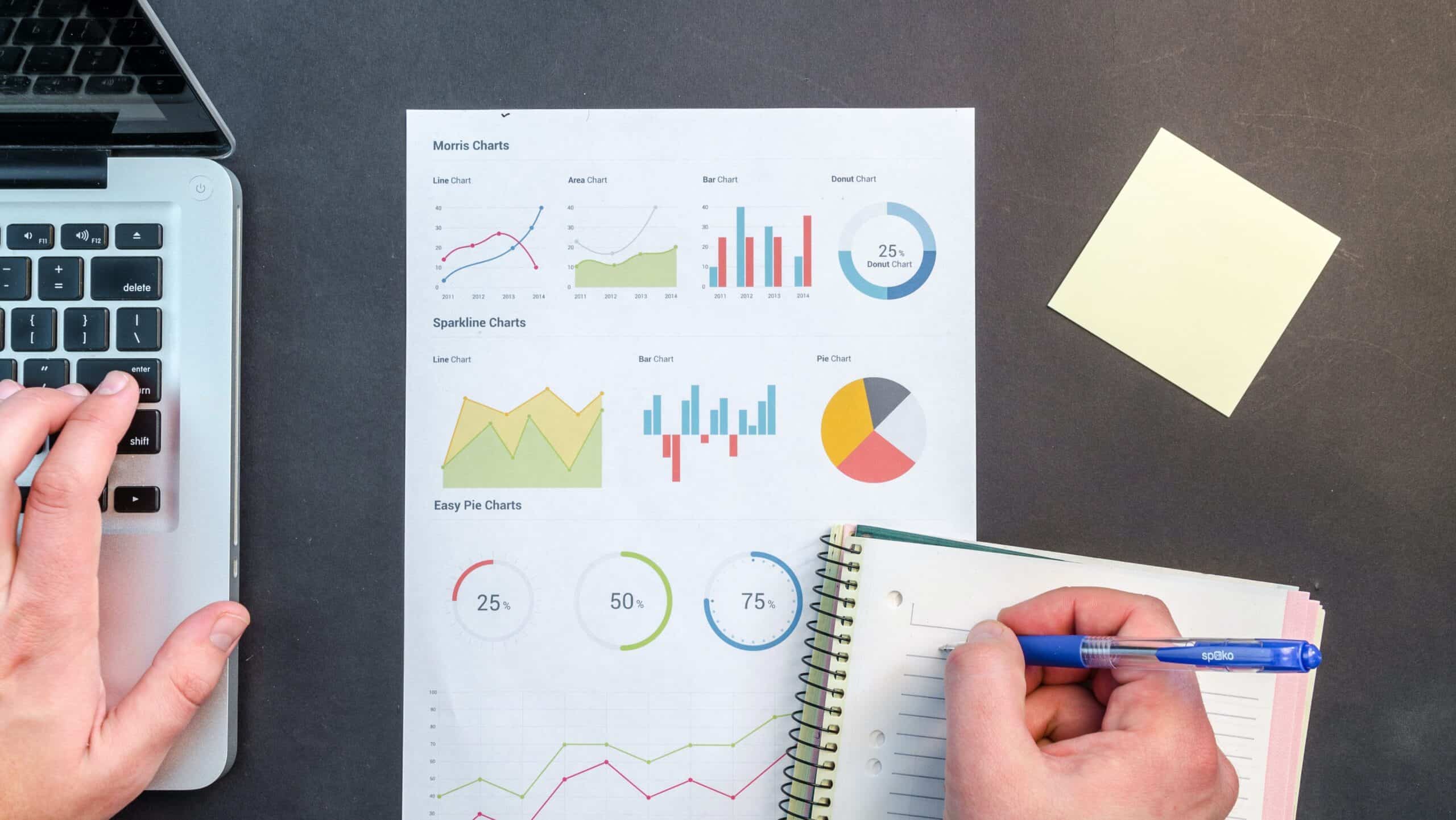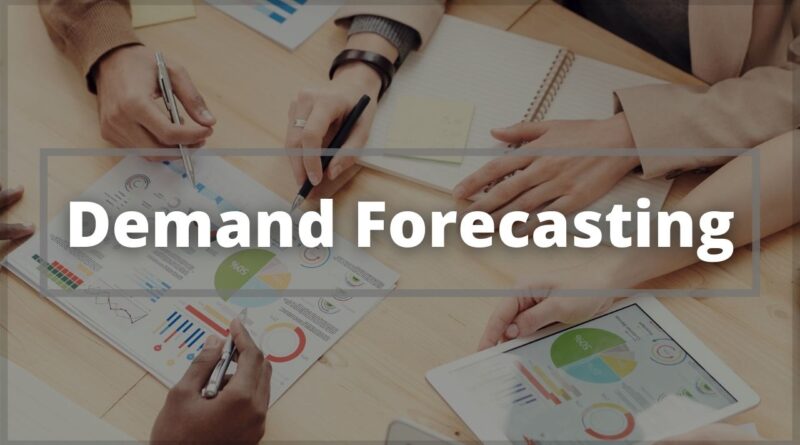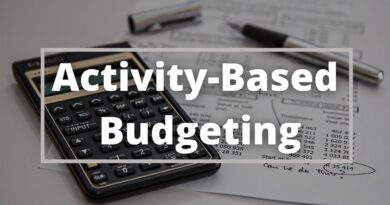What is Demand Forecasting? (PDF): Definition, Principles, Types, Methods & Issues
Demand forecasting is the systematic process to evaluate future demand for a specific product. Simply put, it allows you to examine the sales scientifically over upcoming weeks, months and years, so that you know exactly how much stock to order and hold at any given time period.
The world of e-commerce is becoming very complex day by day as more and more people buy and sell goods online. The more avenues there are to sell on, the tougher it becomes to record all of that data. As the channel companies can sell through continues to diversify, the capability to investigate through sales data and predict trends will quickly become an invaluable resource.
With the help of demand forecasting, businesses can enhance inventory by predicting future sales from analyzing past sales data to make proper business decisions about everything from inventory planning and warehousing needs, to running flash sales and meeting customer demands.
What you are going to learn?
Definition of Demand Forecasting
Demand forecasting is the method of using historical sales data to evaluate future customer demand. It is an important step for businesses to make wise and quick decisions about inventory levels based on purchase trend estimates.
Steps Involved in Demand Forecasting
1. Identification of Business Objectives:
Initially, we should know about the aim of forecasting. We must be aware of what we get from the forecasting. Evaluation of factors like composition and quantity of demand for goods, cost to be quoted, sales planning and inventory control, etc., done in the Identification stage.
2. Determining the Nature of Goods:
Different goods have their own special demand. For example- capital goods (investments), consumer durables, and non-durables goods in which category our goods fall we should estimate.
3. Determining The Time Perspective:
Based on the aim set, the demand forecast can either be for the short term, say for the next 2-3 years, or a long term. While forecasting demand for a short term (2-3 years), we can assume many determinants of demand to remain unchanged or do not change significantly. But in the long term, the elements of demand may transform. Thus, it is necessary to define the time perspective.
4. Making a Choice of Method of Forecasting:
After setting of aim and time perspective, the method for implementing the forecast is selected. There are various methods of demand forecasting categorized under ‘survey methods’ and ‘statistical methods’. The forecaster must choose the method that best suits his requirement.
The Survey method includes consumer survey and opinion poll methods, on the other hand, the statistical methods include trend projection, barometric and econometric methods.
5. Collection & Adjustment of Data:
After deciding the method, the next step is to collect the needed data, which may be primary or secondary or both. The primary data are the first-hand data that no one has collected before, while the secondary data are the data that are already available. Usually, the data required is not available and hence the data are to be balanced, even manipulated, if needed with a purpose to build data consistent with the data required.
6. Estimation & Interpretation of Results:
After collecting the required data, we finalize the demand forecasting method. The last step is to evaluate the demand for the pre-defined years of the period. Generally, the estimates appear as equations, and the result is interpreted and represented in an easy and accessible form.
Types of Demand Forecasting
There are several ways businesses can forecast demand. Every forecasting models leverage data and analytics over limited spans of time. Working with over one forecasting model can also highlight variations in forecasts. Those variations can point to a need for more analysis or better data inputs.
1. Passive Demand Forecasting
Passive demand forecasting is the simplest forecasting model, in which you use sales data from the past to predict the future. You should apply data from the same season to predict sales. This is appropriate for those whose business has seasonal fluctuations.
It is easier than other types as it doesn’t require you to use statistical methods or study economic trends.
2. Active Demand Forecasting
If your business is in a growing phase or if you’re just starting out, active demand forecasting is an excellent choice. An active forecasting model takes into studying your market research, marketing campaigns, and development plans.
Active projections will usually factor in externals. Factors can include the economic outlook, growth projections for your market sector, and projected cost savings from supply chain capabilities. Startups having fewer past data to draw on will need to base their guesses on external data.
3. Short-term projections
Short-term demand forecasting studies just in the next three to 12 months. This is suitable for managing your just-in-time supply chain. Looking at short-term demand allows you to balance your projections based on real-time sales data.
If you run a product structure that changes again and again, following short-term demand is important. For most businesses, though, a short-term forecast is just one piece of a larger mystery. In these cases, you should look further out with medium or long-term demand forecasting.
4. Long-Term Projections
This type of demand forecasting is done for greater than a year. This helps to identify and plan for seasonality, annual sequences, production capability, and expansion over a longer time. This drives a long-term business approach (e.g., plans to launch a facility or store internationally and expand into new markets).
5. Internal Business Forecasting
Internal business forecasting helps businesses understand if their capacity planning is convenient for expected customer demand. Providing a more extensive review of business operations, internal business forecasting assists with determining improvement areas in order to optimize resources.
6. External Macro-Level Demand Forecasting
External macro-level demand forecasting deals with the broader market movements, which depend on the macroeconomic environment. External Forecasting is carried out for assessing the strategic targets of a business like entering new customer segments, product portfolio development, a significant change in consumer behavior, and risk-reducing strategies.

Demand Forecasting Methods
There are two basic types of demand forecasting method.
- Qualitative methods
- The Delphi technique
- Sales force opinion
- Market research
- Quantitative methods
- Trend projection method
- Barometric technique
- Econometric forecasting technique
The Delphi Technique:
A group of experts is appointed to produce a Demand Forecast. Each expert is suggested to generate a forecast of their elected specific segment. After the initial forecasting round, each expert reads out their forecast, and every expert influences another expert. A consequent forecast is again produced by all experts and the process is repeated until all experts achieve a near consensus scenario.
Sales Force Opinion:
The Sales Manager asks for inputs of predicted demand from every Salesperson in their team. Each Salesperson assesses their respective region and product categories and serves their individual customer demand. Eventually, the Sales Manager aggregates all the demands and sets up the final version of the Demand Forecast after management’s opinion.
Market Research:
In the market research method, customer-specific surveys are used to generate possible demand. Such surveys are generally question-based that directly seek personal, analytical, preference, and economic information from end customers. Since this type of research is on a random pattern basis, care needs to be involved in terms of the survey regions, locations, and polls of the end customer. This type of technique could be useful for products that have little to no demand history.
Trend Projection Method:
We can effectively deploy the trend projection method for businesses with a large sales data history of typically over 18 to 24 months. This historical data sets up a “time series” which illustrates the past sales and projected demand for a specific product category under normal conditions by a graphical plotting method or the least square method.
Barometric Technique:
The barometric technique of Demand Forecasting is based on the basis of recording events in the present to forecast the future. In the Demand Forecasting process, this is carried out by classifying the statistical and economic indicators. Forecasters use statistical analysis like Leading series, Concurrent series, or Lagging series to make the Demand Forecast.
Economic Forecasting Technique:
Econometric forecasting uses autoregressive integrated moving-average and complex mathematical equations to create relationships between demand and factors that affect the demand. An equation is developed and fine-tuned to assure a reliable historical representation. Finally, the projected values of the influencing variables are introduced into the equation to make a forecast.
Demand Forecasting Objectives
Objectives of demand forecasting include the followings:
- Financial planning.
- Pricing Policy.
- Manufacturing policy.
- sales.
- Marketing planning.
- Capacity planning.
- Expansion.
- Labour planning.
- Capital Expenditure.
Issues With Demand Forecasting
Before you do effective demand forecasting, you need actual information. Issues with demand forecasting in most businesses have to do with missing data. Here are some things that can impede your forecasts.
Lack of Historical Sales Data:
This is a problem for businesses with a little track record. However, established businesses can struggle with this. Sales data from past years should be gathered and organized into a pattern that is easy to use.
Inadequate Supply Chain Management:
Even the best demand forecast can’t help you if your supply chain isn’t predictable and well-managed. You should know the exact lead times needed to source raw materials, produce finished goods, and ship them to your order fulfillment warehouse. In addition, you need to be hands-on with all facets of your supply chain. This will allow you to immediately fix the problems that might hold up your production.
Lack Of Inventory Control:
Perfect inventory management is the key to good demand planning. If you don’t have control over what you have in the warehouse, you can over-or undervalue your production. Hopefully, your 3PL services provider can help you with that.
Terms Related to Demand Forecasting:
Total Quality Management
Total quality management is a growing process of detecting and minimize or eliminating errors. It is a series of management practices throughout the organization adapted to assure the organization always meets or exceeds customer requirements. We can summarize TQM as a management system for a customer-focused system that deals with all employees in continuous improvement. It uses data, strategy, and effective communications to integrate quality discipline into the culture and exercises of the organization. These approaches are present in modern quality management systems. Read More>>>
Change Management
Change management has become one of the most vital factors for success in the bureaucratic paradigm of the modern world. The project development process and all the other elements related to the project are not that steady and have to be changed every so often because of the changing requirement of the market. That’s why project managers have to set up a process of change management in their development strategy to secure that it can handle any changes that come in the way of their development process being a success with ease. Read More>>>
Stakeholders
Stakeholders can be indigenous or extraneous to an organization. Domestic stakeholders are people whose involvement in a company comes through a direct relation, such as employment, ownership, or investment. Extraneous stakeholders are the persons who do not directly work with a company but are influenced anyway by the activities and outcomes of the business. Suppliers, creditors, and public groups are all recognized as external stakeholders. Read More>>>
Resource Management
In the last few decades, resource management has developed into a very crucial part of modern business structure. This area is quite a bit sophisticated. An array of novel ideas has been established ever since it started growing. Resource management has appeared as an independent practice after organizations became complex with matrix structure and extended in multiple geographies. Read More>>>





Pingback: What is Forecasting? methods, process, PDF - EDUCATIONLEAVES
Pingback: What is Just-In-Time? [PDF] | Definition, Process, Benefits, Disadvantages, and Example - EDUCATIONLEAVES
Pingback: What is Sales Forecasting? | Sales Forecasting Method, Types, Importance, and Elements | Sales Forecasting PDF - EDUCATIONLEAVES
Pingback: ABC Analysis - EDUCATIONLEAVES
Pingback: Law of Demand and Supply: [PDF Included] Curves, Importance, Conditions, & Factors Affecting Demand and supply - EDUCATIONLEAVES